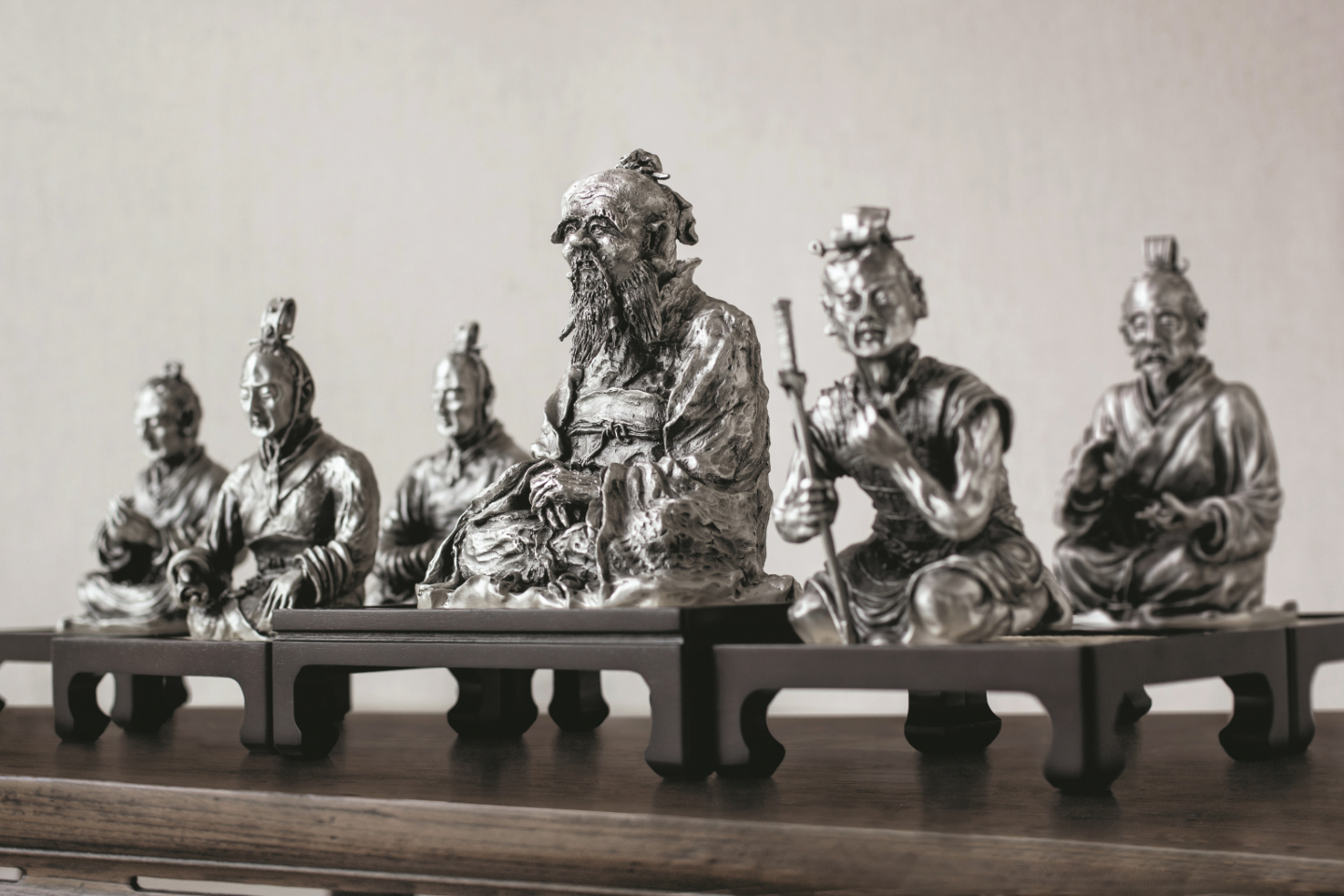
The Celestial Wisdom collection (All photos: Royal Selangor)
With just four words in Mandarin, Kong Fu Zi or Confucius, as he is better known in the English-speaking world, made a poetic comparison between a gentleman and a pot. Loosely translated, the words jun zi bu qi mean “an educated man should not just be a vessel or a tool”.
This was the sage’s reaction to a man who came to him for lessons in gardening. Confucius asked him to seek out an old gardener instead, illustrating the man’s inability to differentiate between mere training and educating oneself.
More than 2,000 years later, Taiwanese artist and author Chiang Yi-Tze, who is also an authority on Confucianism, borrows this idiom as we sit looking at the sculpted figures of the Chinese philosopher and five of his most devoted disciples, Yanhui (Ziyuan), Min Sun (Ziqian), Ran Yong (Zhonggong), Duanmu Ci (Zigong) and Zhong You (Zilu).
Having first created bronze replicas of these figures in the 1970s, Master Chiang was approached by Malaysian pewter specialists Royal Selangor for a collaboration on recreating them in pewter. It is the launch of these sculptures that has brought us to The Puxuan Hotel and Spa in Beijing.
74344925_2976972392317407_4704491787723472896_o.jpg
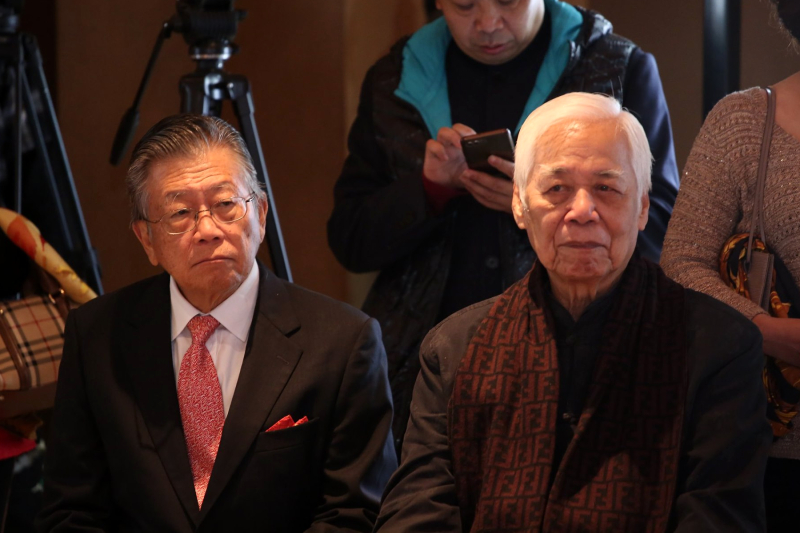
The project was three years in the making, says Royal Selangor executive director Yong Yoon Li, who named the sculpture series Celestial Wisdom. “This is part of a trilogy based on Chinese ideologies that started about seven to eight years ago with Ben (Benjamin Tan) as our art consultant,” says Yong. “As a brand, we always go back to our Chinese roots and what we can learn from them. Yes, there are other civilisations that we can relate to and connect with but there is something very deep and rich about Chinese ideologies.”
After releasing an initial series called Celestial Blessings, featuring the deities Guan Yin, Guan Yu and the trio of Fu, Lu and Shou with another artist, Yong and Tan visited Chiang in Taichung City, Taiwan, to plan the next part of the trilogy. “We wanted to take it to the next level and work with experts in various disciplines. This is episode two and when we wanted to embark on wisdom, I thought about mindfulness and human relations in their purest form. Naturally, Confucianism came to mind,” explains Yong.
That the launch of Celestial Wisdom is in China is not just a matter of convergence — Royal Selangor has invited Confucius’ 77th generation descendant, Kong Deyong and his son Richard Kong, as guests of honour — but it comes when Confucianism is experiencing a renaissance in the philosopher’s home country after the rejection of his teachings for a century by, for example, the New Culture Movement and Mao Zedong’s devastating 1973 propaganda campaign that attacked everything Confucius-related during the Cultural Revolution.
74177720_2976972248984088_4447420089339215872_o.jpg
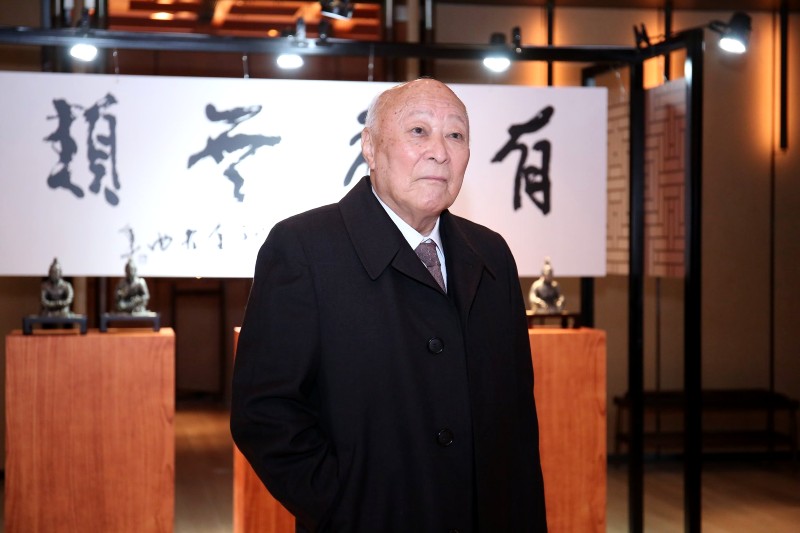
So, why is an ancient teacher of almost mythical status who lived in the period Before Christ still so significant (and even contentious) in modern times?
Said to have been born in 551 BC near the present-day Qufu in Shandong province in the Lu feudal kingdom, Confucius became a court adviser and held a political position before he gave it all up to focus on passing on his knowledge about morality, justice, familial and social relationships and more. After his death, many of his teachings were recorded by his disciples in the foremost compendium of Confucianism, Lun-Yu or the Analects of Confucius. Much of the content revolves around his dialogues with his students.
While his teachings were not groundbreaking, being rooted in the cultural customs and systems of the time, he is largely credited with breathing new life and a sense of literary eloquence into them. Perhaps more importantly, his emphasis on self-cultivation and personal virtue and exemplification was a response to what he felt was the decay and corruption of the ancient Chinese kingdoms due to greed and power, a theme that carries on in our present world.
But his greatest contribution to education was probably his belief that it should be for all and not just the elite. That he walked the talk had a tremendous impact on Chinese society thereafter, one that resonates to this day.
80457740_l.jpg
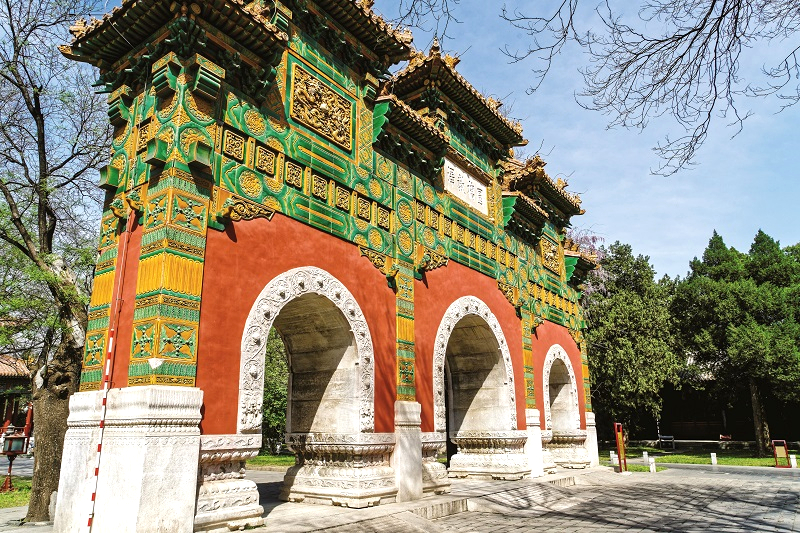
And that brings us back to the present, where a group of Malaysian, Taiwanese and Chinese men and women can collectively reflect on their own upbringing and recall what they were taught about filial piety, how to behave and self-discipline — values one man sitting under an apricot tree in Qufu thousands of years ago would have imparted to his students.
“Jun zi bu qi. A cup cannot just be a cup. It has to be elevated through the hands of the one who created it,” Chiang tells Yong with a smile. “I never thought something used to make functional items and ornaments like vases and pots can be used in creating art. In this case, Yong’s choice of making pewter sculptures of my work is not just ornamental anymore. The idea of what it represents — ‘education without discrimination’ — gives it new meaning and depth. It can be passed on as a symbol to be reflected on by others.”
He continues with another phrase: “Yi su you dao (philosophy within art).”
One can get used to this sort of eloquent speech. It certainly helps one picture the seated figure of an old Confucius teaching his disciples, all of whom are renowned for their own virtue. The booklet that comes with the sculpture series gives more details of Confucius and his disciples, each of whom holds a unique item reflective of his character.
celestial_wisdom_collection_2.jpg
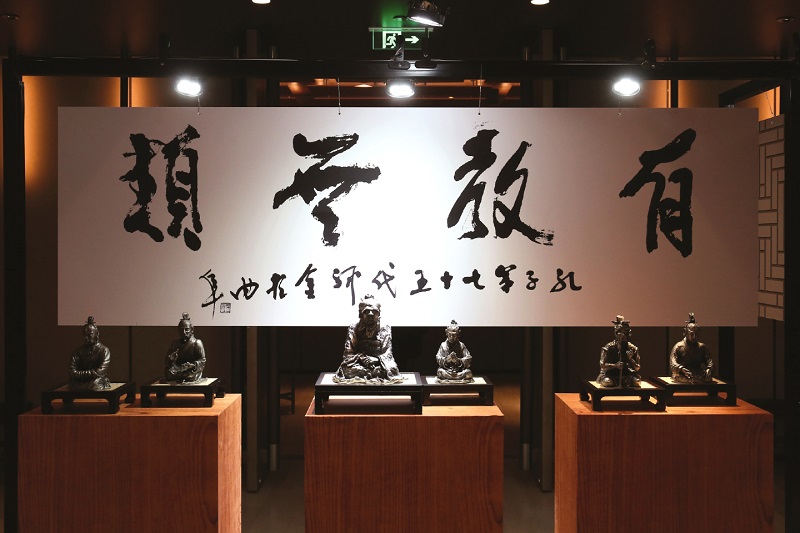
“I wanted to create an image where his (Confucius’) face shows the evidence of his experiences, and with it, his knowledge and insights. That’s why I chose to depict Kong Fu Zi in his old age,” explains Chiang.
In pewter — which involved a painstaking process of moulding the original bronze replica in parts and then putting them together by hand — the texture and details of the sculpture become more pronounced and animated, giving it presence, albeit one of quiet confidence and humility befitting Confucius’ persona. Each of the six sculptures in the series is placed on an elevated base with a woven traditional mat handmade by Kelantanese weavers using mengkuang leaves.
“We didn’t want to make it too ornate but to replicate that feeling of Confucius sharing his ideas or having these dialogues in a simple gazebo or on a pavilion in his house. We just wanted it to be comfortable,” says Yong on the aesthetic of the sculpture.
Admitting that he was not well versed in the sage’s teachings growing up, Yong says the project gave him an opportunity to reflect on his own upbringing and intrigued him enough to study more. “If there’s one that really resonates with me, it’s about the virtues of a gentleman, particularly about discernment — once you have clarity of mind, not being influenced by anything else, you can make just decisions.”
confucius.jpg
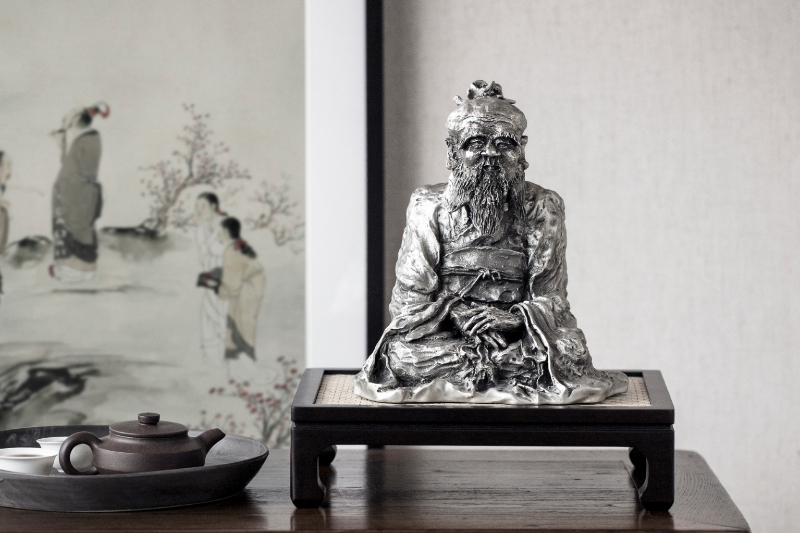
Richard Kong, who is a 78th generation descendant, says he too was not taught Confucius’ philosophies as a child, having been born just before the Cultural Revolution. “It caused us a lot of trouble,” he says simply of the time. The retired investment banker, who, with his father, spent 30 years creating the latest iteration of the Kong family tree, says it was only in the last decade that he started studying his ancestor’s teachings under the tutelage of a famous cultural master in Confucianism.
Kong says while presenting the latest record of the family tree of more than three million descendants in a big celebration and ritual of honour in Qufu, he had an epiphany — that he wanted to go into education. “That’s why I retired and we’re now working on syllabuses based on Confucius’ values and teachings that can be taught in kindergarten, elementary school, middle school and to adults — all different levels. We will start engaging schools and organisations once the syllabuses are ready.
“If you look at the world today, it’s all about digital economy and IT. It’s changing lives. But at the same time, traditional Chinese philosophy and wisdom can be given new life. That’s why it’s cultural tradition and not just traditional culture. The difference is that you can pass it on, grow and evolve it. Just like this sculpture, it’s bringing the old into the new, breathing new life into it and bringing his values back into focus,” Kong emphasises.
He gestures at the old figure, who looks somewhat content, and now smiling. Confucius seems an unlikely role model for our times but with his emphasis on learning, self-reflection and virtue above power and glory, perhaps he is just the sort of saint we need to bring back into our world today.
This article first appeared on Dec 2, 2019 in The Edge Malaysia.


